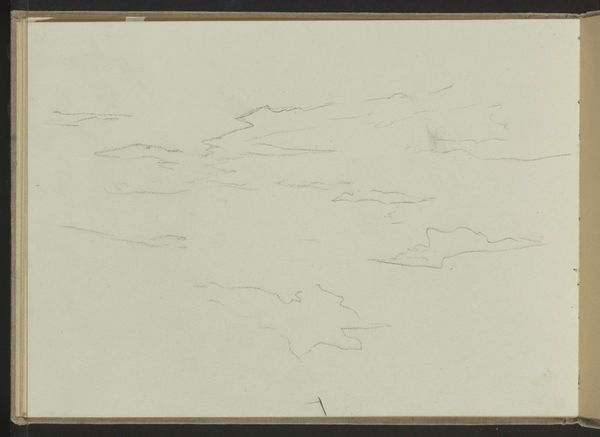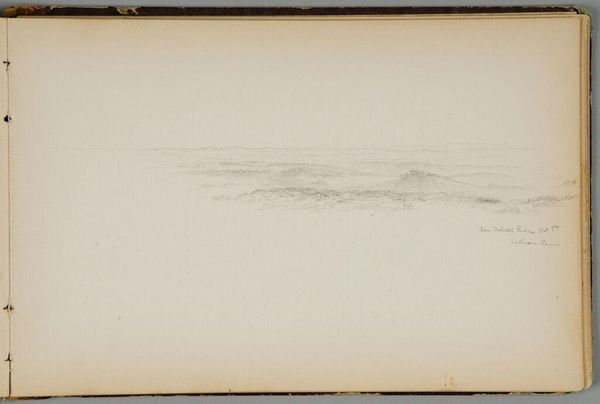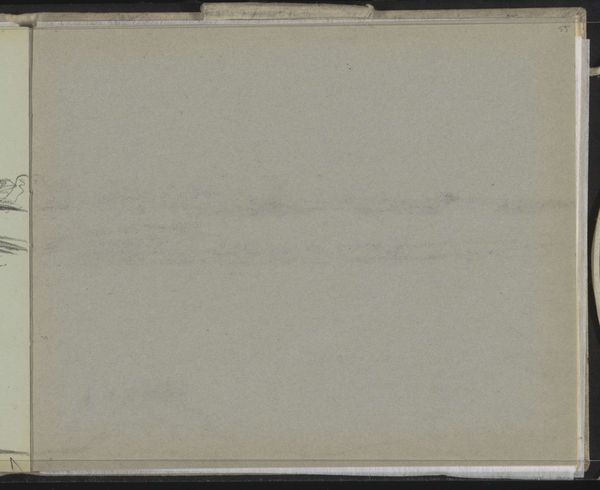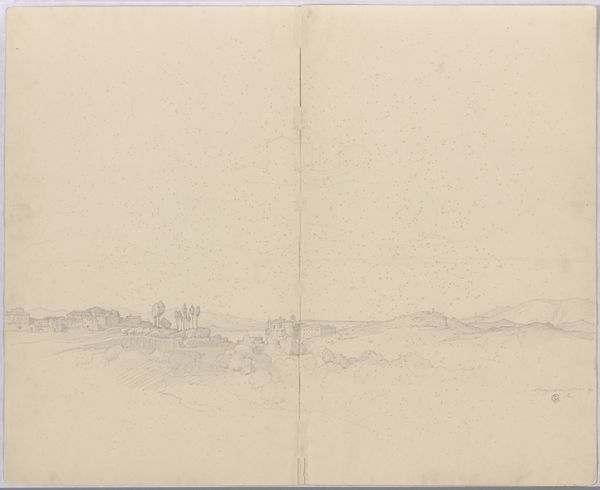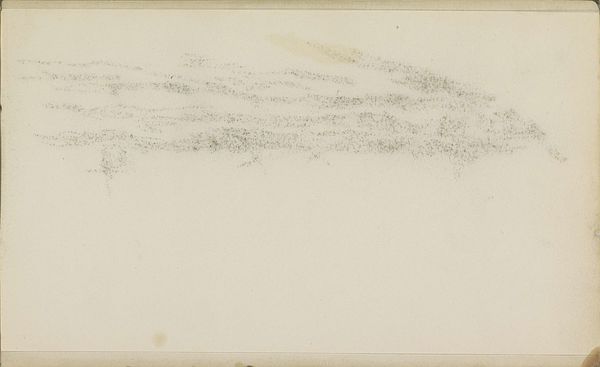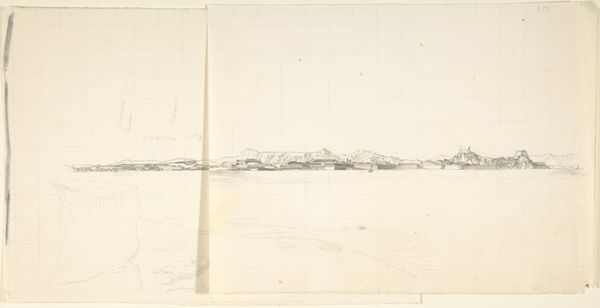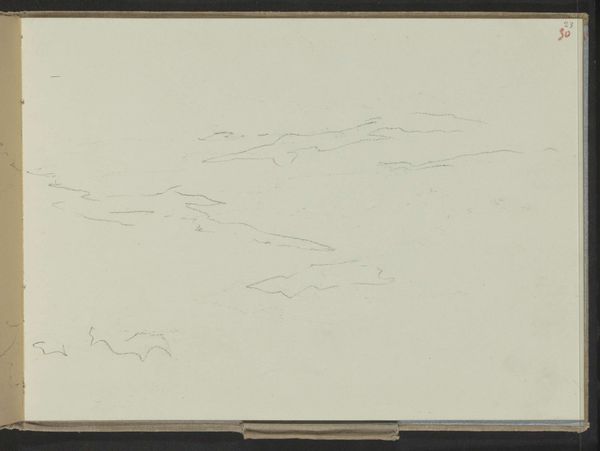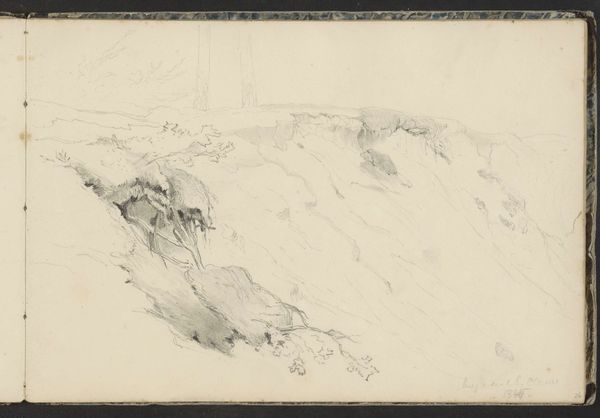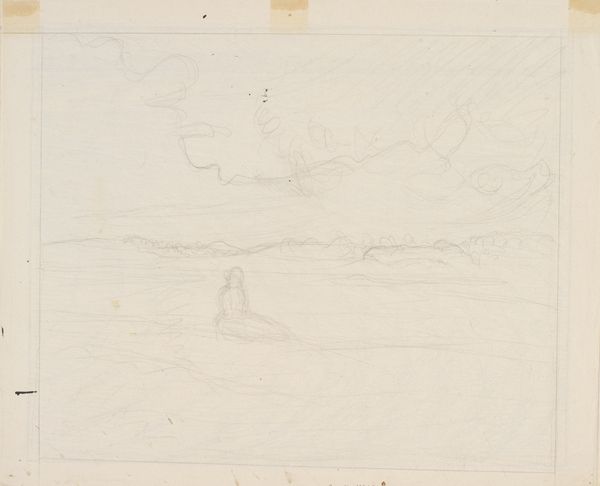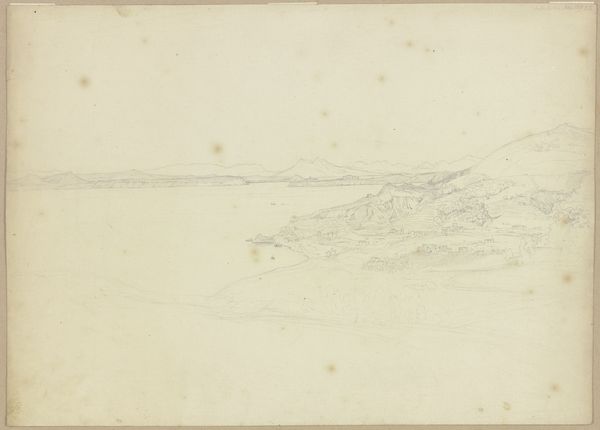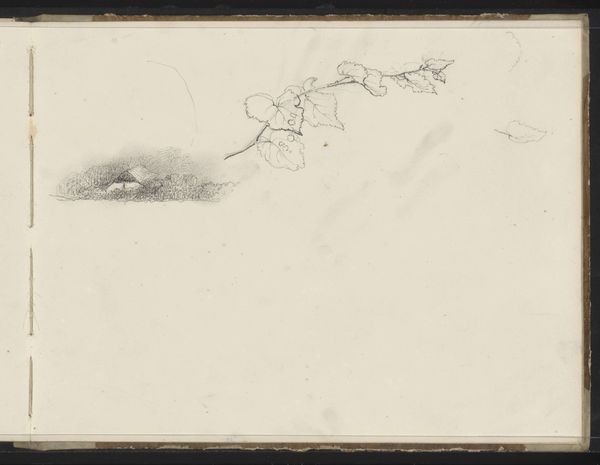
Copyright: Rijks Museum: Open Domain
Curator: Here we have Willem Witsen’s "Abklatsch van de krijttekening op pagina 19," a drawing possibly from between 1906 and 1909. It’s currently held here at the Rijksmuseum. Editor: My first impression is one of quiet desolation. The subdued tones and the sketched quality evoke a sense of loneliness and maybe a subtle beauty in that isolation. Curator: Witsen, working in the late 19th and early 20th centuries, was deeply embedded in artistic and intellectual circles concerned with representing the rapid social changes and urbanization happening in the Netherlands. This sketch, part of a larger sketchbook, likely captures his personal reflections on these changes, possibly critiquing the alienation that often accompanied them. The homemade paper itself suggests a retreat from industrial production. Editor: Interesting. I am immediately drawn to the composition. The light is distributed unevenly across the page, creating visual tension, almost like a Rothko painting in grayscale. The lack of sharp lines directs our focus not on detailed depictions, but on the relationship between the forms and their textures. Curator: Precisely. The "abklatsch," or rubbing, suggests a deliberate act of reproduction, a distancing from the original scene. It invites us to consider how Witsen felt about his subject matter, and if he was satisfied, for instance, with the first original representation. The drawing is ghost-like and serves as a mediation through art and memory. It also evokes broader philosophical questions about artistic authenticity and labor during a period of mass reproduction. Editor: Absolutely. There's an interesting ambiguity here in terms of material presence too: the graphite interacts uniquely with the paper. The physical reality of applying marks to the substrate creates an expressive dimension beyond just representational purposes. It captures a feeling. Curator: In viewing this work within the broader context of Witsen's oeuvre and the socio-political climate of his time, it serves as a visual document and artistic expression reflecting on themes of industrialization, societal alienation, and artistic integrity. Editor: I concur, understanding the social and historical background does deepen our perception. Viewing it now, one also grasps its formal elegance. It truly encapsulates the power of minimal means.
Comments
No comments
Be the first to comment and join the conversation on the ultimate creative platform.
